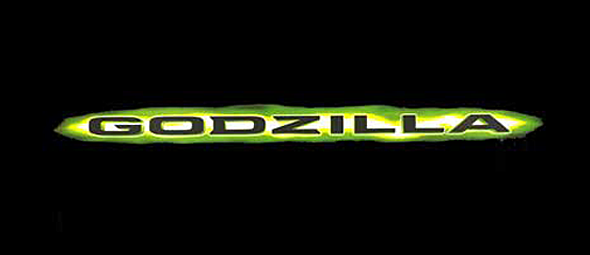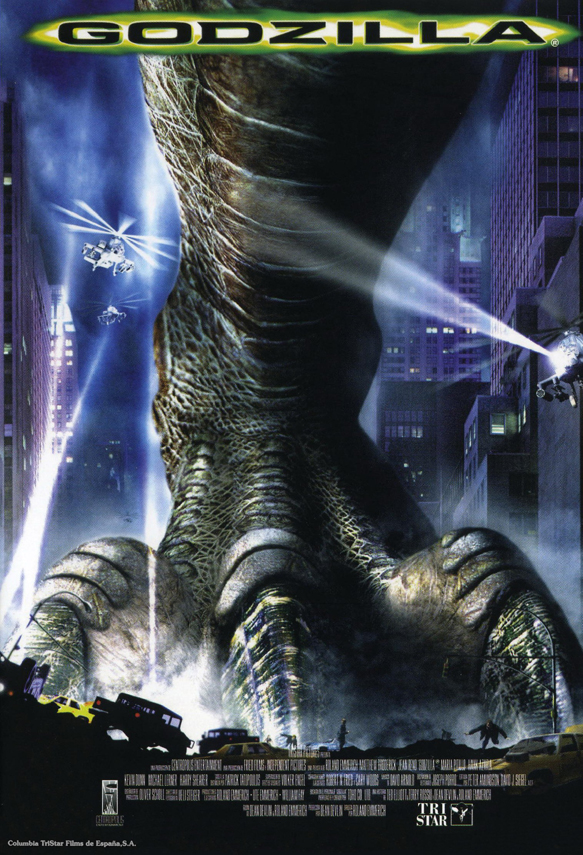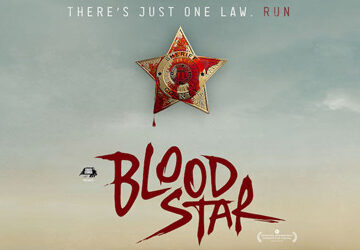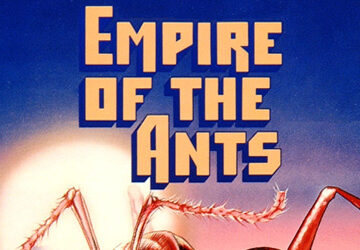This week in Horror movie history, back on May 20th of 1998, the classic tale of Godzilla received a twentieth century upgrade in Roland Emmerich’s (ID4 1996, Independence Day: Resurgence 2016) co-written/directed film Godzilla. Godzilla had been terrorizing audiences since Japan’s 1954 original film directed by Ishirō Honda, and soon the dinosaur was pitted against other classic creatures over time, such as King Kong, Mothra, Monster Zero, Ebirah, Hedorah, Gigan, Megalon, even Mechagodzilla, among others. With the 1998 edition, it marked the twenty-third Godzilla film, and the first ever to be produced solely in a Hollywood studio. Produced/co-written by Dean Devlin (Stargate 1994, Cellular 2004) the film was released via Centropolis Entertainment and Sony Pictures Entertainment with distribution by TriStar Pictures in the US and Toho in Japan. The film also had a star-studded cast that included Matthew Broderick (Ferris Bueller’s Day Off 1986, Trainwreck 2015), Maria Pitillo (Natural Born Killers 1994, Bright Lights, Big City 1988), and Hank Azaria (Pretty Woman 1990, The Smurfs 2 2013). While many opinions were panned at the time of release, Godzilla has gained a cult following eighteen years later.
- Still from Godzilla (1998)
The story begins with Dr. Niko “Nick” Tatopoulos (Broderick), a nuclear biologist, who is recruited by the US government to help Dr. Elise Chapman (Vicki Lewis: Finding Nemo 2003, Finding Dora 2016) and Philippe Roaché (Jean Reno: Mission: Impossible 1996, The Da Vinci Code 2006) figure out what has caused havoc from the Pacific Ocean, to Jamaica, to New York before it destroys the City That Never Sleeps.
When Emmerich set out to do a Godzilla movie, it was ten years in the making after Toho agreed to share the rights through American Producer Henry G. Saperstein. After initially being rejected by Columbia and TriStar, Sony Producers Cary Woods and Robert Fried submarined the suits and went directly to the CEO, Peter Guber, who also saw the potential. Initially, the idea was to go with a three-film deal in the vein of the classic Godzilla films. The catch was that Emmerich wanted to do the film on his own terms, so as a result, he need to come up with his Godzilla design. Toho approved the new look after holding the suspense; yet, the movie still was not greenlit. Still Emmerich and Devlin went forward with the script, again with stipulations that they would retain the script if it was rejected.
For all their posturing before about creative freedom, Emmerich and Devlin followed the template set by Toho with Godzilla being a product of nuclear testing when writing the script. The aspect they changed was to make Godzilla more animalistic than a mere monster. Instead of the original Godzilla’s atomic breath, the American Godzilla had combustible breath. The final change to Godzilla was to make it able to give birth to hundreds at a time. With the first draft complete, the movie was finally given the green-light.
- Still from Godzilla (1998)
Although a suit was made, the crew wanted to use computer graphics over practical effects. Therefore, 400 computer graphics were used for the movie to a couple dozen practical effects throughout the eleven month production. In addition, the production had the crew shooting on location in Hawaii, California, and New York with the actual US Marines involved, specifically Marines Reserve Pilot Col. Dwight Schmidt having the role of firing the kill missiles. Marketing-wise, the crew were of the mindset that less is better when teasing Godzilla. As a result, none of the three-hundred companies used for promotion, such as Taco Bell, had promotional material that showed a fully fleshed-out Godzilla. Unfortunately, this did not work and many companies lost money because their product just did not sell.
When it was all said and done, Godzilla came out in the green when it was released despite a majority of negative reviews from critics and audiences alike with few positive. Representatives from Toho walked out of the G-Con ’98 screening in Chicago dissatisfied by what they saw. On the other hand, that season’s awards ceremonies had the movie win or nominated for Best Special Effects, Outstanding Individual Achievement for Effects Animation, David Arnold, Blockbuster Entertainment Award 1999 Favorite Song: Sean Combs, Bogey Awards for 1998, Bogey Award in Silver, California On Location Awards 1998, and Location Team of the Year in a Feature. Again, on the flipside of the normal awards, Godzilla was either nominated or won every category of the dreaded Raspberry Awards, the awards given to the films deemed the worst of the year.
- Still from Godzilla (1998)
The main problem with the movie was that Godzilla was not a man-in-suit. Although, computer graphic Godzilla seamlessly fit into scenes, Emmerich was so wrapped up in technology, many agreed that he lost the heart of the character with his changes. Sure, the end can pull at the ol’ heartstrings, but what is in the second act is where audiences need to care. If core characteristics of the main character are not there, audiences will and felt alienated. As far as the human characters, they play their parts admirably; however, they do not seem to know what kind of movie they were in, whether it be Comedy, Action, Drama, or Horror, in that their dialogue and their actions did not match. This made for a disjointed movie. Less is better.
Despite the choices that hampered the popularity of the movie at release and killed plans for the subsequent sequels, Godzilla continued in an animated series that continued the film’s storyline, running from 1998-2000. Also, rentals have proven profitable with a take of around $70.8 million in the US according to IMDB.com, proving the cult status of the movie. It would be another sixteen years until another American Godzilla movie was attempted when it was release in May of 2014. Both critics and fans praised the iteration, and a few “versus” films are planned over the next five years with a direct sequel to 2014’s hit bowing in ’19, ensuring that the nuclear dinosaur will continue wreaking havoc on our side of the pond for some time to come.
- TriStar Pictures









No comment